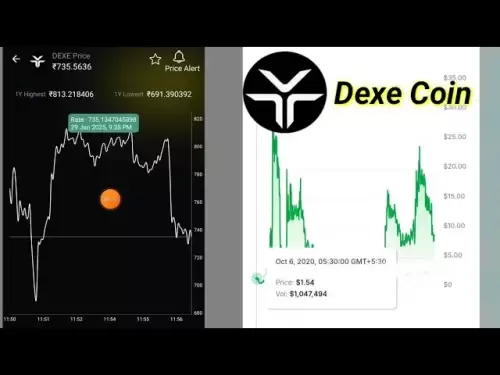-
 Bitcoin
Bitcoin $108,165.4587
0.78% -
 Ethereum
Ethereum $2,456.3517
1.15% -
 Tether USDt
Tether USDt $1.0003
0.00% -
 XRP
XRP $2.1934
0.05% -
 BNB
BNB $650.0935
0.52% -
 Solana
Solana $151.3905
2.69% -
 USDC
USDC $0.9998
0.00% -
 TRON
TRON $0.2751
-0.32% -
 Dogecoin
Dogecoin $0.1640
0.87% -
 Cardano
Cardano $0.5631
0.57% -
 Hyperliquid
Hyperliquid $38.7115
4.69% -
 Bitcoin Cash
Bitcoin Cash $493.1868
-0.39% -
 Sui
Sui $2.8217
3.61% -
 Chainlink
Chainlink $13.3994
2.08% -
 UNUS SED LEO
UNUS SED LEO $9.1632
0.94% -
 Avalanche
Avalanche $18.0318
1.97% -
 Stellar
Stellar $0.2388
0.35% -
 Toncoin
Toncoin $2.8763
1.41% -
 Shiba Inu
Shiba Inu $0.0...01160
1.59% -
 Litecoin
Litecoin $86.6393
1.29% -
 Hedera
Hedera $0.1485
0.16% -
 Monero
Monero $315.7948
1.56% -
 Polkadot
Polkadot $3.4240
1.88% -
 Bitget Token
Bitget Token $4.6314
-0.44% -
 Dai
Dai $0.9998
-0.01% -
 Ethena USDe
Ethena USDe $1.0002
-0.01% -
 Uniswap
Uniswap $7.2110
2.59% -
 Aave
Aave $270.6087
6.07% -
 Pi
Pi $0.5350
0.52% -
 Pepe
Pepe $0.0...09545
1.26%
Spot currency speculating skills
To mitigate potential losses in spot currency trading, effective risk management strategies involving stop-loss orders, position sizing techniques, and portfolio diversification are essential.
Jan 08, 2025 at 06:02 pm

Key Points
- Understanding the Basics of Spot Currency Trading
- Developing a Trading Strategy
- Managing Risk and Capital Allocation
- Selecting the Right Trading Platform
- Continuous Learning and Education
Understanding the Basics of Spot Currency Trading
Spot currency trading involves the buying and selling of digital currencies at their current market price for immediate settlement. Unlike futures or options contracts, spot trades do not have a fixed expiry date and are settled on a T+0 basis, which means the trade is settled on the same day it is executed. To participate in spot currency trading, traders need to have an account with a cryptocurrency exchange that offers spot trading services.
Developing a Trading Strategy
Before entering the spot currency market, it is crucial to develop a trading strategy that outlines the specific approach you will take when trading. This involves identifying your trading objectives (e.g., scalping, day trading, swing trading), setting risk parameters, and determining the technical or fundamental analysis techniques you will use to make trading decisions. A clear and well-defined trading strategy will provide a roadmap for your actions and help avoid impulsive or emotional trading.
Managing Risk and Capital Allocation
Risk management is a paramount aspect of spot currency trading. Implementing effective risk management strategies can mitigate potential losses and preserve capital. This includes setting stop-loss orders, using position sizing techniques, and diversifying your portfolio across different digital currencies or trading pairs. Additionally, proper capital allocation involves determining the amount of money you are willing to dedicate to trading and allocating it wisely based on your risk tolerance and trading strategy.
Selecting the Right Trading Platform
Choosing the right trading platform is essential for successful spot currency trading. Consider factors such as:
- Security: The platform must have robust security measures in place to protect your funds and personal information.
- liquidity: The platform should have sufficient liquidity to ensure that your trades can be executed promptly and at fair market prices.
- Fees: Trading fees can impact your profitability, so compare the fees charged by different exchanges before choosing one.
- User Interface: The platform should have a user-friendly interface that allows you to navigate and execute trades easily.
Continuous Learning and Education
The cryptocurrency market is constantly evolving, and it is crucial for spot currency traders to stay abreast of the latest developments. Regularly engage in educational activities, such as reading industry news, attending webinars, and studying trading strategies. By continually expanding your knowledge, you can adapt to market changes, improve your decision-making, and ultimately increase your chances of success.
FAQs
What is the difference between spot currency trading and futures trading?
Spot currency trading involves the immediate settlement of trades at the current market price, while futures trading involves contracts with a specified expiry date and a predetermined price.
What are some common spot currency trading strategies?
- Scalping: Frequent entry and exits from trades to capture small price movements.
- Day Trading: Closing all positions before the end of the trading day to avoid overnight risks.
- Swing Trading: Holding positions for multiple days or weeks to capture larger price swings.
How do I calculate potential profits in spot currency trading?
Potential profits are determined by:
- Profit percentage: The difference between the buy and sell prices as a percentage of the buy price
- Trade size: The amount of digital currency traded
- Leverage: The ratio of borrowed funds used to increase potential profits (but also potential losses)
How can I improve my spot currency trading skills?
- Develop a sound trading strategy.
- Practice risk management techniques.
- Continuously educate yourself.
- Seek mentorship from experienced traders.
- Utilize backtesting to evaluate trading strategies.
What are the risks involved in spot currency trading?
- Price volatility: Digital currency prices can fluctuate rapidly, leading to significant losses.
- Market manipulation: Malicious actors may attempt to manipulate market prices, leading to false trading signals.
- Exchange risks: The security of exchanges can be compromised, resulting in the loss of funds.
- Physical risks: Digital wallets can be hacked or lost, leading to the loss of private keys.
Disclaimer:info@kdj.com
The information provided is not trading advice. kdj.com does not assume any responsibility for any investments made based on the information provided in this article. Cryptocurrencies are highly volatile and it is highly recommended that you invest with caution after thorough research!
If you believe that the content used on this website infringes your copyright, please contact us immediately (info@kdj.com) and we will delete it promptly.
- Ruvi AI: The Audited Token Stealing Ripple's Spotlight
- 2025-06-30 02:30:12
- Bitcoin's Supply Shock: Exchange Balances Plunge Amidst Bullish Expectations
- 2025-06-30 02:30:12
- Crypto Investors Navigate US-Iran Tensions: Market Reaction and Resilience
- 2025-06-30 02:40:12
- ATOM, BNB, BlockDAG: Decoding the Latest Crypto Dynamics in the Concrete Jungle
- 2025-06-30 01:30:11
- Bitcoin's Role in a Weak Dollar World: Crypto Demand and Freedom
- 2025-06-30 00:50:12
- Binance, CZ, and XRP: Navigating the Crypto Currents
- 2025-06-30 00:55:12
Related knowledge

What are the skills of Bitcoin option hedging? Practical case sharing
Jun 24,2025 at 04:01pm
Understanding Bitcoin Option HedgingBitcoin option hedging is a risk management strategy used by traders and investors to protect their positions in the volatile cryptocurrency market. By using options, individuals can limit potential losses while retaining the opportunity for profit. In essence, it allows one to insulate against adverse price movements...
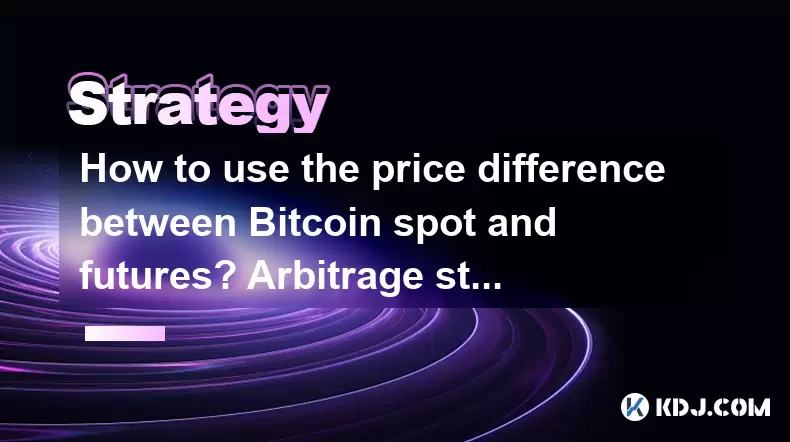
How to use the price difference between Bitcoin spot and futures? Arbitrage strategy
Jun 20,2025 at 02:56pm
Understanding Bitcoin Spot and Futures MarketsTo effectively leverage arbitrage opportunities between Bitcoin spot and futures markets, it's essential to understand the fundamental differences between these two types of markets. The spot market refers to the direct buying and selling of Bitcoin for immediate delivery at the current market price. In cont...
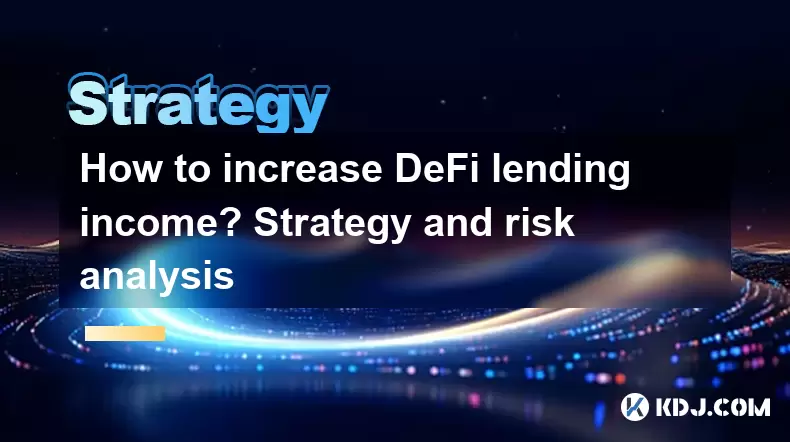
How to increase DeFi lending income? Strategy and risk analysis
Jun 24,2025 at 02:08pm
Understanding DeFi Lending and Its Income PotentialDeFi (Decentralized Finance) lending has emerged as a popular way to earn passive income in the cryptocurrency space. Unlike traditional banking systems, DeFi lending platforms allow users to lend their crypto assets directly to borrowers without intermediaries. The lenders earn interest based on the su...
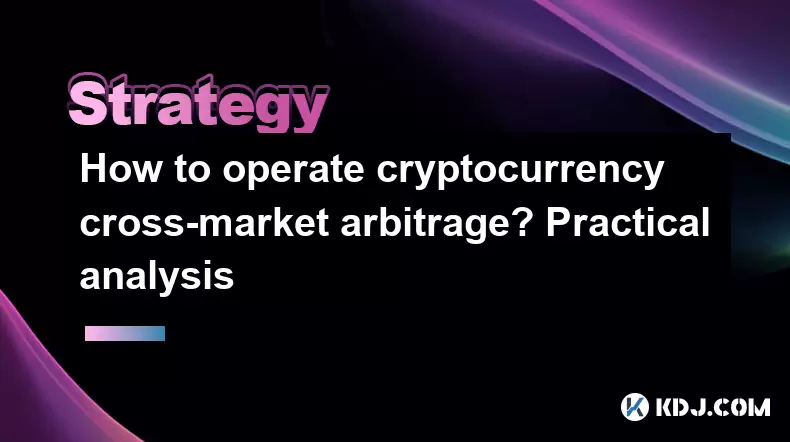
How to operate cryptocurrency cross-market arbitrage? Practical analysis
Jun 23,2025 at 04:01am
Understanding Cryptocurrency Cross-Market ArbitrageCryptocurrency cross-market arbitrage involves taking advantage of price differences for the same digital asset across different exchanges. The core idea is to buy low on one exchange and sell high on another, capturing the profit from the discrepancy. This strategy relies heavily on real-time market da...

How to make profits from high-frequency cryptocurrency trading? Sharing core skills
Jun 19,2025 at 05:07pm
Understanding High-Frequency Cryptocurrency TradingHigh-frequency trading (HFT) in the cryptocurrency market involves executing a large number of trades at extremely fast speeds, often within milliseconds. This method relies on small price discrepancies across exchanges or within a single exchange’s order book. Traders use complex algorithms and ultra-l...
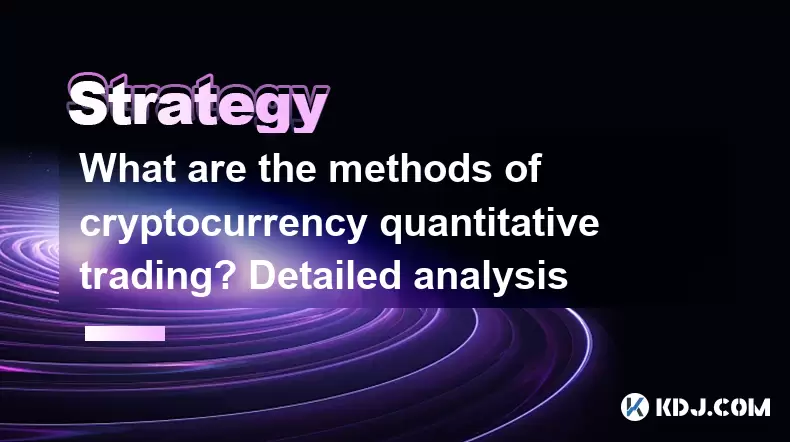
What are the methods of cryptocurrency quantitative trading? Detailed analysis
Jun 22,2025 at 11:07pm
Understanding the Core of Cryptocurrency Quantitative TradingCryptocurrency quantitative trading refers to the use of mathematical models and algorithms to execute trades in the digital asset market. Unlike traditional discretionary trading, which relies heavily on human judgment, quantitative trading leverages data-driven strategies to identify profita...

What are the skills of Bitcoin option hedging? Practical case sharing
Jun 24,2025 at 04:01pm
Understanding Bitcoin Option HedgingBitcoin option hedging is a risk management strategy used by traders and investors to protect their positions in the volatile cryptocurrency market. By using options, individuals can limit potential losses while retaining the opportunity for profit. In essence, it allows one to insulate against adverse price movements...

How to use the price difference between Bitcoin spot and futures? Arbitrage strategy
Jun 20,2025 at 02:56pm
Understanding Bitcoin Spot and Futures MarketsTo effectively leverage arbitrage opportunities between Bitcoin spot and futures markets, it's essential to understand the fundamental differences between these two types of markets. The spot market refers to the direct buying and selling of Bitcoin for immediate delivery at the current market price. In cont...

How to increase DeFi lending income? Strategy and risk analysis
Jun 24,2025 at 02:08pm
Understanding DeFi Lending and Its Income PotentialDeFi (Decentralized Finance) lending has emerged as a popular way to earn passive income in the cryptocurrency space. Unlike traditional banking systems, DeFi lending platforms allow users to lend their crypto assets directly to borrowers without intermediaries. The lenders earn interest based on the su...

How to operate cryptocurrency cross-market arbitrage? Practical analysis
Jun 23,2025 at 04:01am
Understanding Cryptocurrency Cross-Market ArbitrageCryptocurrency cross-market arbitrage involves taking advantage of price differences for the same digital asset across different exchanges. The core idea is to buy low on one exchange and sell high on another, capturing the profit from the discrepancy. This strategy relies heavily on real-time market da...

How to make profits from high-frequency cryptocurrency trading? Sharing core skills
Jun 19,2025 at 05:07pm
Understanding High-Frequency Cryptocurrency TradingHigh-frequency trading (HFT) in the cryptocurrency market involves executing a large number of trades at extremely fast speeds, often within milliseconds. This method relies on small price discrepancies across exchanges or within a single exchange’s order book. Traders use complex algorithms and ultra-l...

What are the methods of cryptocurrency quantitative trading? Detailed analysis
Jun 22,2025 at 11:07pm
Understanding the Core of Cryptocurrency Quantitative TradingCryptocurrency quantitative trading refers to the use of mathematical models and algorithms to execute trades in the digital asset market. Unlike traditional discretionary trading, which relies heavily on human judgment, quantitative trading leverages data-driven strategies to identify profita...
See all articles





















